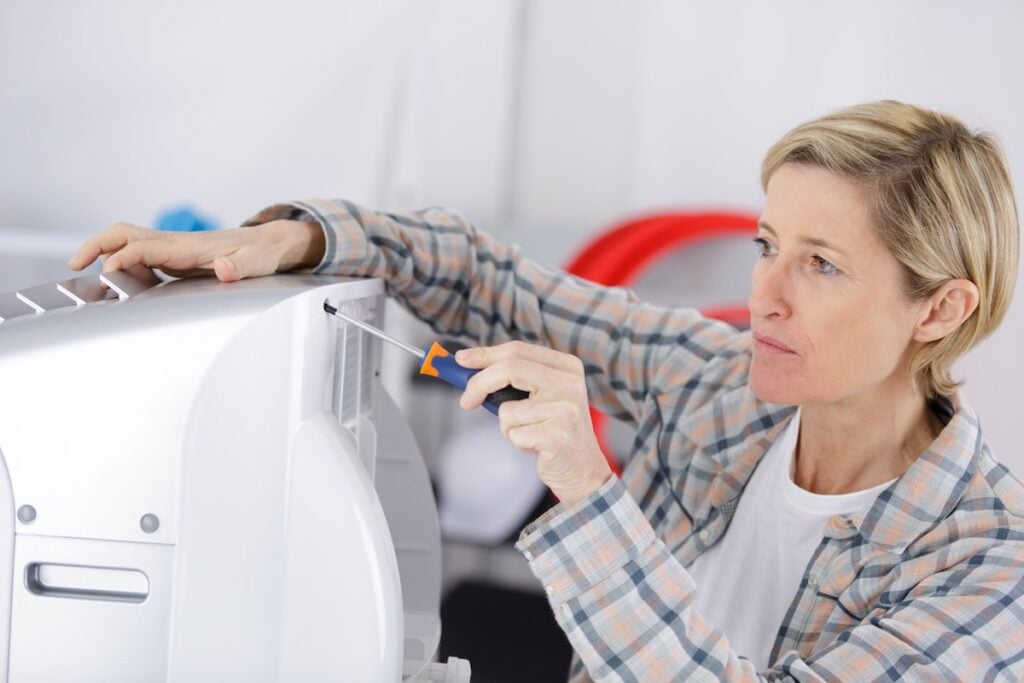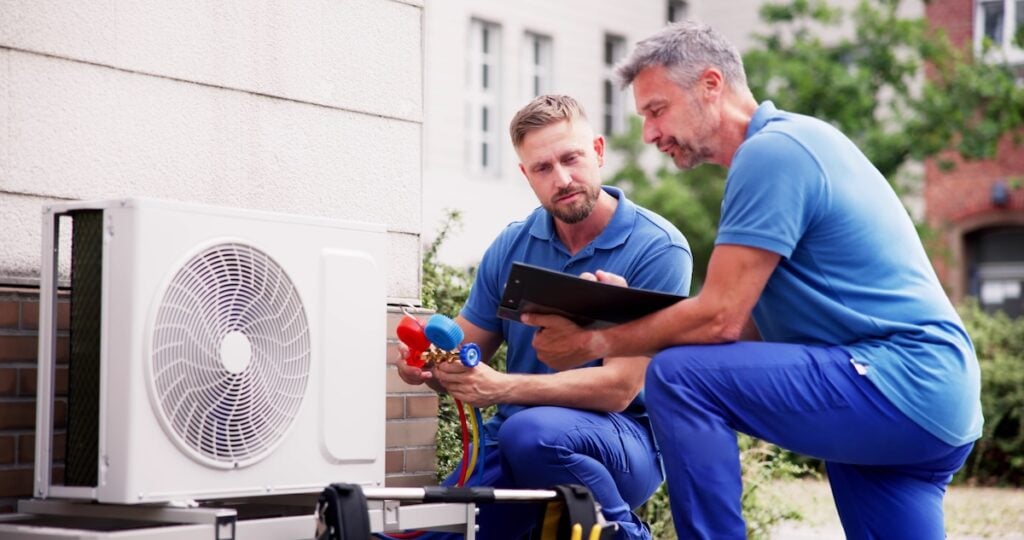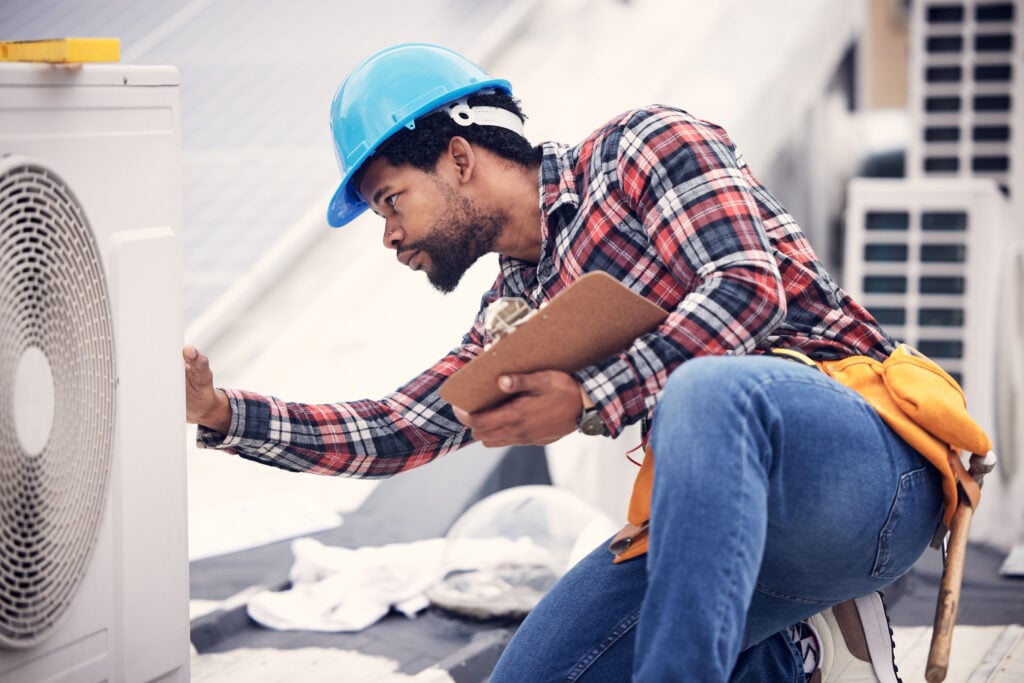Is DIY HVAC Installation Feasible, or Should I Hire Experts?
When it comes to keeping your home comfortable year-round, few systems matter as much as your heating and cooling setup. A properly functioning HVAC system keeps temperatures consistent, improves indoor air quality, and helps control energy bills. But with the rise of online tutorials and easy-to-buy kits, many homeowners are asking: is HVAC installation something you can truly handle yourself—or is it better left to professionals?
Before you roll up your sleeves, it’s important to understand what’s really involved. Installing an HVAC system isn’t just about connecting a few parts; it’s about ensuring proper airflow, electrical wiring, refrigerant levels, and safety compliance. If you’re weighing the pros and cons, you can also learn more about what’s included in professional HVAC services to better understand the difference.
In this guide, you’ll learn:
- What makes HVAC installation so complex and important
- The major risks of attempting a DIY installation
- The advantages of professional expertise and certified installation
- How to determine whether your system needs replacement or repair
- Practical steps for maintaining your new HVAC system for long-term performance
Why Proper HVAC Installation Matters

Many homeowners think of HVAC systems as plug-and-play appliances, but they’re far more intricate. Even a slight error during installation can affect comfort, energy efficiency, and system lifespan. Whether you live in Fort Mill, SC or surrounding areas, the right installation ensures your system performs as intended for years to come.
Here’s why correct installation is critical:
- Energy Efficiency: A system that’s properly sized and installed will heat and cool more efficiently, lowering monthly utility costs.
- Comfort Control: Properly calibrated airflow ensures consistent temperatures throughout your home, eliminating hot and cold spots.
- Longevity: Equipment that runs smoothly from the start experiences less strain, reducing the need for premature repairs or replacement.
- Indoor Air Quality: Correct ductwork connections and sealed systems prevent pollutants from circulating through your home.
- Safety: HVAC systems involve electrical components, refrigerants, and combustion processes—all of which require strict safety protocols.
An HVAC system is a long-term investment, and the installation process is one of the most important steps in protecting that investment.
5 Reasons Why DIY HVAC Installation Can Backfire
While it might seem tempting to save money upfront, handling HVAC installation on your own can lead to expensive issues later. Let’s break down the most common reasons this approach can go wrong.
1. Lack of Technical Knowledge
Installing a new HVAC system involves far more than attaching ducts and connecting wires. It requires:
- Correct system sizing based on square footage, insulation, and climate zone.
- Calculating airflow and load distribution for optimal efficiency.
- Properly connecting refrigerant lines and ensuring leak-free seals.
Without experience, even small missteps can cause inefficiency, frequent system cycling, or permanent damage to major components.
2. Safety Hazards
HVAC systems involve high voltage, gas lines, and chemical refrigerants—all of which carry significant safety risks. Incorrect wiring could lead to electrical shorts or fire hazards, while refrigerant mishandling may expose you to toxic substances. Additionally, improper venting of combustion gases can increase the risk of carbon monoxide buildup.
Professionals are trained and licensed to handle these dangers safely.
3. Warranty and Code Compliance Issues
Most HVAC manufacturers require professional installation to keep equipment warranties valid. DIY work can void those warranties instantly, leaving you responsible for repair or replacement costs.
In Fort Mill, SC and surrounding areas, building codes also require specific permits and inspections for HVAC installation. Attempting the work yourself could lead to code violations and potential penalties.
4. Hidden Costs and Inefficiency
While a DIY installation might appear cheaper upfront, it often leads to higher long-term costs. Incorrect refrigerant levels, misaligned ductwork, or electrical mistakes can all cause your system to work harder, driving up your monthly bills.
Common DIY issues that cost homeowners more later include:
- Uneven heating and cooling across rooms
- Shortened system lifespan
- Frequent breakdowns and repair calls
5. Reduced Home Value and Comfort
If you ever plan to sell your home, unpermitted or improperly installed HVAC equipment can lower its resale value. Potential buyers—and their inspectors—will notice whether your system was professionally installed and certified. Beyond resale, your day-to-day comfort and air quality may suffer from a poorly performing system.
Professional HVAC Installation: Why It Pays Off

Hiring certified experts isn’t just about convenience—it’s about ensuring precision, safety, and efficiency. Here’s how a professional approach can make a measurable difference.
Expert System Sizing
Professionals use Manual J load calculations to determine the exact heating and cooling capacity your home requires. This eliminates the guesswork and prevents the system from being oversized (leading to inefficiency) or undersized (causing overwork).
Licensed and Certified Workmanship
Certified HVAC technicians are trained in electrical wiring, refrigerant management, and ventilation standards. They follow local and federal codes to ensure compliance and safety.
Advanced Equipment and Tools
Professionals use diagnostic tools that measure static pressure, refrigerant charge, and airflow—data that ensures every component is balanced and calibrated correctly.
Long-Term Cost Savings
Although professional installation comes with an upfront cost, it quickly pays for itself in reduced energy bills, fewer repairs, and longer equipment lifespan. You’ll also maintain full manufacturer warranty coverage.
Comprehensive Support
Professionals don’t just install—they guide you through maintenance schedules, filter replacements, thermostat programming, and system care tips. That ongoing support ensures your system performs reliably year after year.
Key Steps in a Professional HVAC Installation
To understand what makes expert installation so effective, it helps to see what the process actually looks like. Here’s what licensed technicians typically do during a standard home HVAC install.
Step 1: System Assessment and Sizing
Technicians begin with a full home evaluation. They measure square footage, insulation levels, window placement, and ductwork condition. Using this data, they calculate heating and cooling loads to determine the correct system size.
Step 2: Equipment Selection
Once sizing is complete, the team helps you choose equipment that matches your comfort goals and budget. Options may include:
- Central air conditioning and furnace combinations
- Heat pumps for efficient dual heating and cooling
- Ductless mini-split systems for targeted room comfort
Step 3: Old System Removal and Preparation
Before installation, the old system is safely disconnected and removed. Technicians then prepare the area by checking electrical connections, leveling the base, and ensuring proper ventilation clearance.
Step 4: Installation and Calibration
New equipment is installed according to manufacturer specifications. The crew connects refrigerant lines, electrical wiring, and ductwork. Once assembled, they calibrate the system and test it for performance.
Step 5: Quality Testing and Final Inspection
Before leaving, technicians perform a full system test to ensure proper function and efficiency. They also verify compliance with local building codes and clean up the work area.
In Fort Mill, SC and surrounding areas, reputable installers often schedule follow-up visits to confirm that your system is operating as expected during its first few weeks of use.
Comparing DIY vs. Professional Installation
Sometimes a visual comparison helps clarify the decision.
| Aspect | DIY HVAC Installation | Professional HVAC Installation |
| Skill Level Required | High (electrical, mechanical, and refrigerant handling) | Certified technicians only |
| Warranty Protection | Often voided | Fully protected under manufacturer terms |
| Safety Risk | High due to electrical and gas components | Low when performed by licensed pros |
| Code Compliance | Typically non-compliant | Fully compliant with local building codes |
| Long-Term Efficiency | Frequently reduced | Optimized for peak performance |
| Cost Over Time | Low upfront, high repair/energy costs | Moderate upfront, long-term savings |
The difference isn’t just peace of mind—it’s about protecting your investment, comfort, and safety.
Enhancing Your HVAC System’s Lifespan
Once your system is properly installed, a few maintenance habits that you can do yourself that can help it run at its best for years to come.
Regular Filter Replacement
Replace or clean filters every 1–3 months, depending on system type and usage. Dirty filters restrict airflow and reduce efficiency.
Annual Professional Maintenance
Have your system professionally inspected at least once per year. Technicians check refrigerant levels, inspect coils, clean components, and verify system calibration.
Keep the Area Clear
Ensure the outdoor condenser unit remains free from leaves, dirt, and debris. Maintain at least 2 feet of clearance for optimal airflow.
Seal Duct Leaks
Air leaks in ductwork waste energy and make rooms feel unevenly heated or cooled. Sealing ducts can improve efficiency by up to 20%.
Upgrade Your Thermostat
Smart thermostats allow better control and scheduling, reducing unnecessary system strain and optimizing comfort.
When to Consider HVAC Replacement

Even with regular care, all systems eventually reach the end of their lifespan. Most HVAC systems last about 10–15 years, depending on usage and maintenance. Signs it might be time to replace include:
- Frequent repairs or rising maintenance costs
- Uneven temperatures across your home
- Excessive noise during operation
- Noticeably higher energy bills
- Inability to maintain desired comfort levels
In Fort Mill, SC and surrounding areas, homeowners often replace systems before peak summer or winter seasons to avoid downtime during extreme temperatures.
Make the Smart Choice for Your Home
While DIY HVAC installation might sound like a budget-friendly option, the risks and long-term costs usually outweigh the savings. Professional installers ensure your system runs efficiently, safely, and within warranty protection. From proper sizing and setup to final inspection, their experience provides unmatched reliability and comfort.
Panther HVAC proudly serves Fort Mill, SC and surrounding areas with licensed, insured, and certified technicians who prioritize quality craftsmanship and customer education. Whether you’re installing a new system or upgrading your existing one, our team is here to make sure it’s done right.
To schedule a consultation or learn more about professional installation options, contact us today for expert service and trusted results that last.
